Tibet, often celebrated as the "Roof of the World," is home to some of the most spectacular and culturally significant valleys on the planet. Exploring the famous Tibet valleys offers a unique glimpse into the region's breathtaking natural landscapes and rich history. From the bustling Lhasa Valley, with its profound religious landmarks, to the remote tranquility of Gyirong Valley, travelers can experience a diverse range of environments and activities. Whether you are interested in the Yarlung Tsangpo Valley for its historical importance as the cradle of Tibetan civilization, or the Gama Valley for unmatched trekking opportunities amidst towering peaks, Tibet’s valleys are must-visit destinations. Each valley, be it the agriculturally rich Nyang-chu Valley or the economically pivotal Zhangmu Valley trade route, presents a unique story and adventure, making them essential in any Tibet valley travel guide for those looking to explore Tibet valleys.
At Druk Holidays, we pride ourselves on being the premier choice for travelers eager to explore the famous Tibet valleys. Our expertly crafted tours are designed to immerse you in the breathtaking natural landscapes and rich cultural heritage of Tibet. With Druk Holidays, you gain unparalleled access to the majestic Lhasa Valley, the historic Yarlung Tsangpo Valley, and the stunning Gyirong Valley, among others. Our deep local knowledge and commitment to providing a memorable and authentic experience make us the best company to guide you through these must-visit valleys in Tibet. Whether you're seeking adventure, spirituality, or just a peaceful escape amidst some of the most scenic valleys on earth, Druk Holidays is your trusted partner for an unforgettable journey.
Lhasa Valley
Lhasa Valley is not just the administrative capital of Tibet but also the spiritual heart of this ancient land. Nestled in the Himalayas, Lhasa is a city of wonders, where the past meets the present. The valley is alive with the rich tapestry of Tibetan Buddhism, visible in its monasteries, temples, and the devout pilgrims who travel great distances to experience its sacred sites. Lhasa Valley offers a profound insight into the spiritual and cultural life of the Tibetan people, making it a cornerstone for any visitor's journey to Tibet.
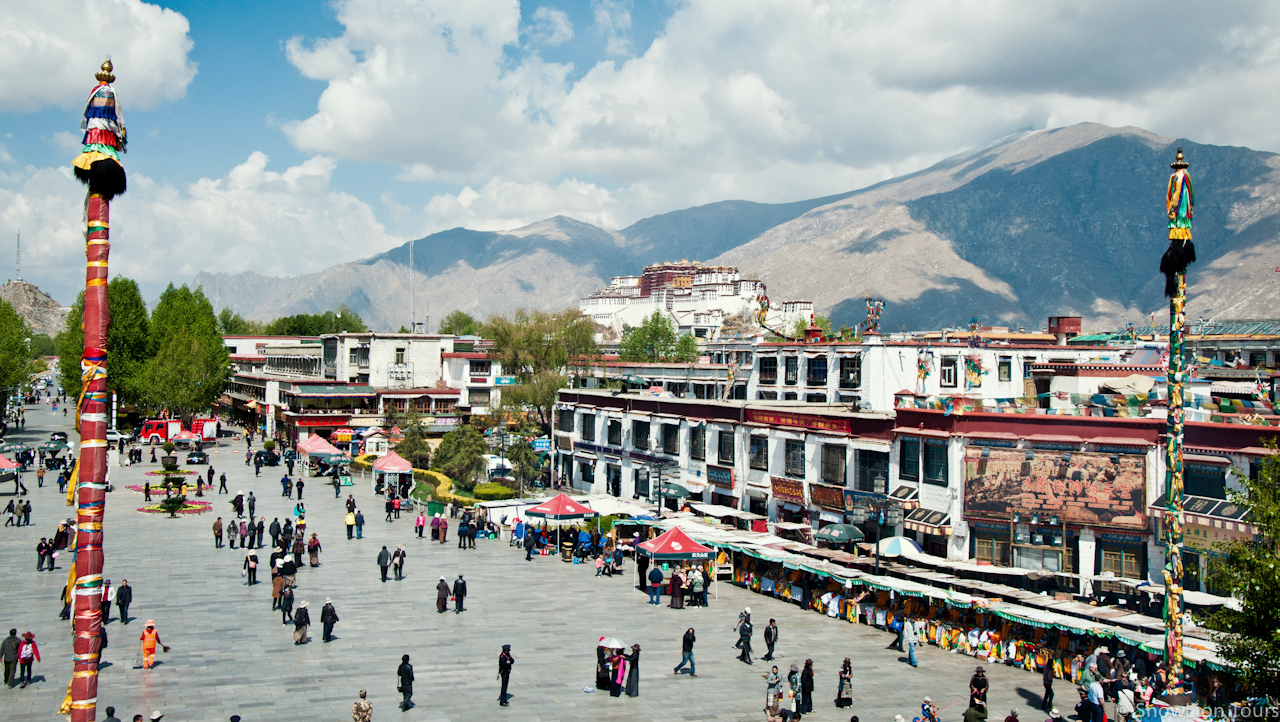
- Potala Palace: The iconic symbol of Tibet, this historical palace was the winter residence of the Dalai Lamas and stands as a stunning example of Tibetan architecture.
- Jokhang Temple: Considered the most sacred and important temple in Tibet, it's a key site for pilgrimages and houses many invaluable religious artifacts.
- Barkhor Street: Encircling the Jokhang Temple, this bustling market area is filled with vendors selling traditional Tibetan arts, crafts, and souvenirs.
- Sera Monastery: Famous for its lively monk debates on Buddhist doctrines, which occur in the courtyard each afternoon.
- Norbulingka: Known as the "Summer Palace" of the Dalai Lamas, this beautiful garden estate is a perfect example of Tibetan palace architecture.
- Drepung Monastery: Once the world’s largest monastery, it housed thousands of monks and is revered for its important annual events like the Shoton Festival.
- Ramoche Temple: A significant temple known to house some of the most revered statues and religious texts, originally brought to Tibet by Princess Wencheng.
- Lukhang Park: A peaceful island park behind the Potala Palace, known for its walking paths and views of the palace reflecting on the lake.
Lhasa Valley is a vibrant cultural hub that offers an unparalleled glimpse into Tibetan life and spirituality. With its stunning historical sites and lively cultural expressions, Lhasa is a must-visit destination for anyone seeking to understand the heart and soul of Tibet. Whether you are exploring the ancient halls of the Potala Palace or wandering through the lively streets of Barkhor, Lhasa Valley promises an enriching and unforgettable experience.
Yarlung Tsangpo Valley
Yarlung Tsangpo Valley is renowned as the cradle of Tibetan civilization, steeped in myths and history that date back to the origins of the Tibetan people. Situated in the southern part of Tibet, this expansive valley follows the Yarlung Tsangpo River, known as the Brahmaputra in India, which is one of the longest and highest rivers in the world. The valley is celebrated not only for its historical significance but also for its lush landscapes and agricultural wealth, which have sustained local communities for centuries.
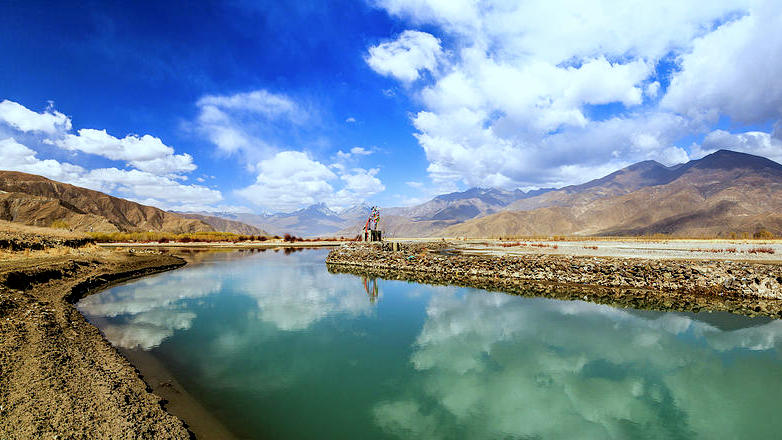
- Yumbulagang Palace: Believed to be the first building in Tibet and the ancient palace of the first Tibetan kings, this architectural marvel provides insights into the origins of Tibetan civilization.
- Tandruk Monastery: One of the oldest and most significant Buddhist monasteries in Tibet, known for its stunning relics and ancient murals.
- Samye Monastery: The first Buddhist monastery built in Tibet, which marks the beginning of formal Buddhism in the region. It's a key pilgrimage site with a unique design representing the Buddhist universe.
- Trandruk Temple: Located near Tsetang, this temple holds religious importance due to its ancient thangkas and impressive pearl thangka of Chenrezi.
- Yarlung River: The lifeline of the valley, this mighty river's banks are dotted with numerous archaeological sites and offer spectacular views of the surrounding landscapes.
- Vale of Kings: An important archaeological zone where many of the early Tibetan kings were buried, providing a historic insight into the valley's importance as a center of power.
- Chim-puk Hermitage: A warren of caves that served as meditation chambers for Guru Rinpoche and his disciples. It's a revered site for those interested in Tibetan Buddhism’s esoteric practices.
- Tombs of Tibetan Kings: These ancient tombs in Chongye, including the well-preserved tomb of King Songtsen Gampo, are a testament to the valley’s historical and cultural significance.
The Yarlung Tsangpo Valley is not only a key geographical feature of Tibet but also a profound cultural and spiritual heartland. The valley’s rich tapestry of history, coupled with its natural beauty and spiritual depth, makes it an essential destination for anyone seeking to explore the roots of Tibetan culture and spirituality. Whether you are delving into the ancient ruins or wandering along the banks of the Yarlung Tsangpo, this valley offers a journey back in time to the very dawn of Tibet.
Nyang-chu Valley
Nyang-chu Valley is nestled in the heart of the Shigatse Prefecture, one of Tibet's most important cultural and historical regions. This fertile valley is watered by the Nyang River, a tributary of the Yarlung Tsangpo, making it an essential agricultural area for the surrounding communities. Beyond its economic importance, Nyang-chu Valley is steeped in Tibetan Buddhism, hosting several significant monasteries and religious sites that draw pilgrims and tourists alike.
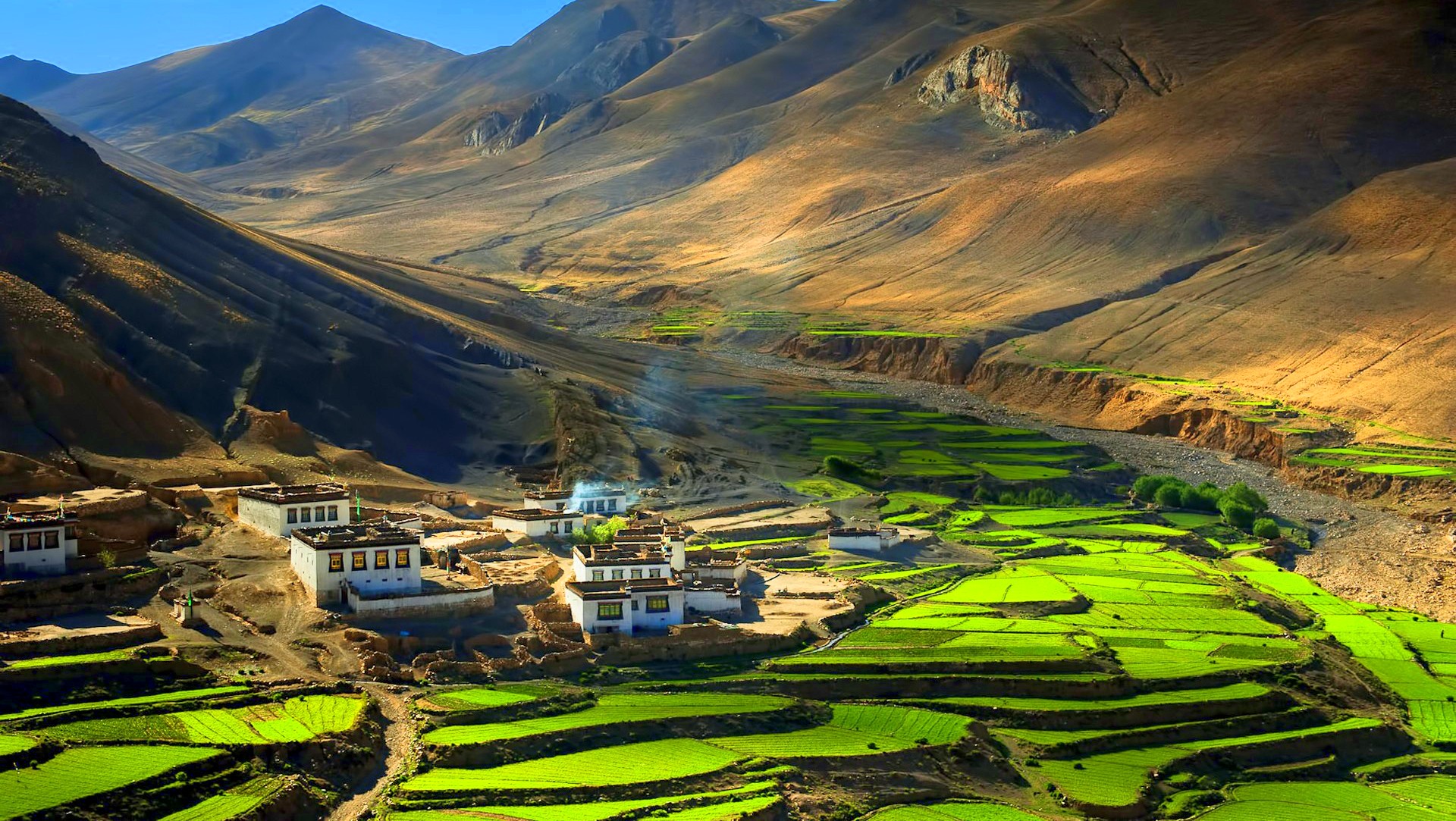
- Tashilhunpo Monastery: The largest monastery in the valley and the traditional seat of the Panchen Lamas, Tashilhunpo is famous for its grand buildings, beautiful statues, and intricate murals.
- Shalu Monastery: Known for its unique blend of Tibetan and Chinese architectural styles, Shalu Monastery is a historic site with ancient murals and a rich library of religious texts.
- Nartang Monastery: Home to one of Tibet's oldest printing houses, Nartang Monastery played a crucial role in the preservation and dissemination of Buddhist scriptures throughout Tibet.
- Sakya Town: Just a short drive from the heart of Nyang-chu Valley, Sakya town is dominated by its great monastery, Sakya, which is famous for its massive collection of Tibetan scriptures and unique Mongolian-style architecture.
- Pelkor Chode Monastery in Gyantse: Featuring a Kumbum (a multi-storied aggregate of Buddhist chapels) which is the largest in Tibet, Pelkor Chode Monastery is an architectural marvel and a repository of Buddhist art.
- Gyantse Dzong: This historical fort offers panoramic views of Gyantse and the surrounding Nyang-chu Valley, providing a strategic overview that narrates tales of past Tibetan battles and governance.
- Gyantse Old Town: A stroll through the old town offers a glimpse into the traditional lifestyle of the Tibetan people, with cobbled streets and quaint local shops selling handicrafts and traditional Tibetan goods.
- Farmland and Natural Scenery: The fertile lands of Nyang-chu Valley are ideal for agriculture, producing barley, wheat, and various fruits, contributing to the sustenance of local communities and adding to the scenic beauty of the area.
Nyang-chu Valley offers a rich tapestry of cultural and historical experiences set against a backdrop of stunning natural beauty. From its sacred monasteries to the verdant fields that line the Nyang River, the valley serves as a vibrant center of Tibetan religion, culture, and agriculture. For travelers looking to explore the deeper aspects of Tibetan life and spirituality, Nyang-chu Valley provides a compelling and enriching destination.
Gama Valley
Gama Valley is renowned for its unparalleled natural beauty, often cited as one of the most beautiful valleys in the world. Located in the Qomolangma National Nature Preserve in Tibet, Gama Valley serves as a gateway to some of the Himalayas' most majestic sights, including Mount Everest. This secluded valley offers a pristine environment that remains relatively untouched by modern tourism, making it a haven for trekkers and nature enthusiasts looking for an authentic wilderness experience.
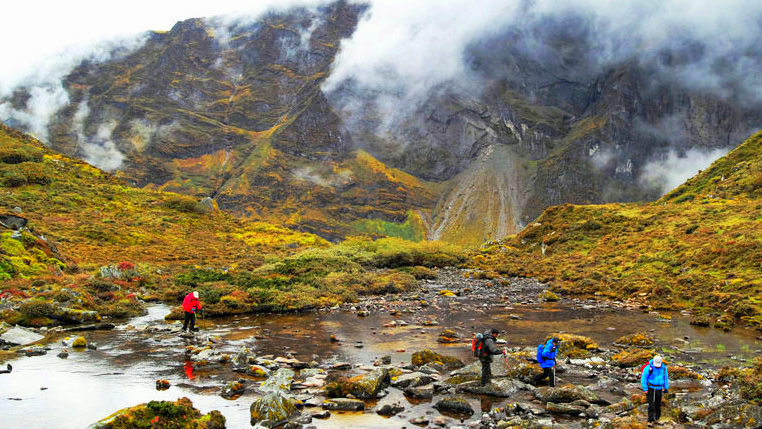
- Spectacular Trekking Routes: Gama Valley is a trekkers' paradise, offering some of the most scenic trails in the Himalayas. These routes provide breathtaking views of snow-capped peaks, including several above 8,000 meters like Mount Everest, Lhotse, and Makalu.
- Rich Biodiversity: The valley's diverse ecosystems are home to a variety of flora and fauna, including rare species such as the snow leopard and red panda. The lush forests and high-altitude meadows are teeming with unique plant life that thrives in this cool, moist climate.
- Everest's Eastern Face: Unlike the more commonly visited northern and southern base camps, Gama Valley offers a unique view of Everest's Kangshung Face, a sheer 3,350-meter ice wall that is one of the mountain's most dramatic aspects.
- Serene Glacial Lakes: The valley is dotted with beautiful glacial lakes, whose crystal-clear waters reflect the surrounding snow-capped mountains, creating stunning, tranquil landscapes perfect for contemplation and photography.
- Vibrant Local Culture: The few small communities within the valley are composed of Tibetan herders and farmers who maintain a traditional lifestyle that has changed little over the centuries. Visiting these communities offers insights into the resilient culture of the Himalayan people.
- Rare Geological Features: The valley's geology includes unique formations and rare minerals, which attract geologists and nature lovers alike. The area's remote nature preserves its pristine condition, offering a natural laboratory for scientific study and exploration.
- Spiritual Solitude: The isolation and tranquility of Gama Valley provide a perfect setting for meditation and spiritual reflection, drawing those seeking peace and solitude away from the bustle of modern life.
- Photography Opportunities: For photographers, the natural beauty of Gama Valley—from the changing hues of the forests and mountains to the dramatic light at dawn and dusk—provides endless opportunities to capture stunning landscapes.
Gama Valley stands out as a hidden gem within Tibet's vast natural wonders. Its untouched beauty and remote trails offer a challenging yet rewarding experience for those adventurous enough to explore its depths. Whether you're a trekker, nature lover, or simply someone who cherishes the profound beauty of the natural world, Gama Valley is an essential destination that promises an unforgettable journey into the heart of the Himalayas.
Zhangmu Valley
Zhangmu Valley, strategically nestled along the southern border of Tibet with Nepal, is a significant gateway for trade and cultural exchange between the two regions. This valley is not just a bustling trade hub but also a fascinating destination for travelers due to its unique position and vibrant atmosphere. Its mild climate and lush green surroundings offer a stark contrast to the arid landscapes typically associated with much of Tibet, making it an intriguing place for both economic and ecological observations.
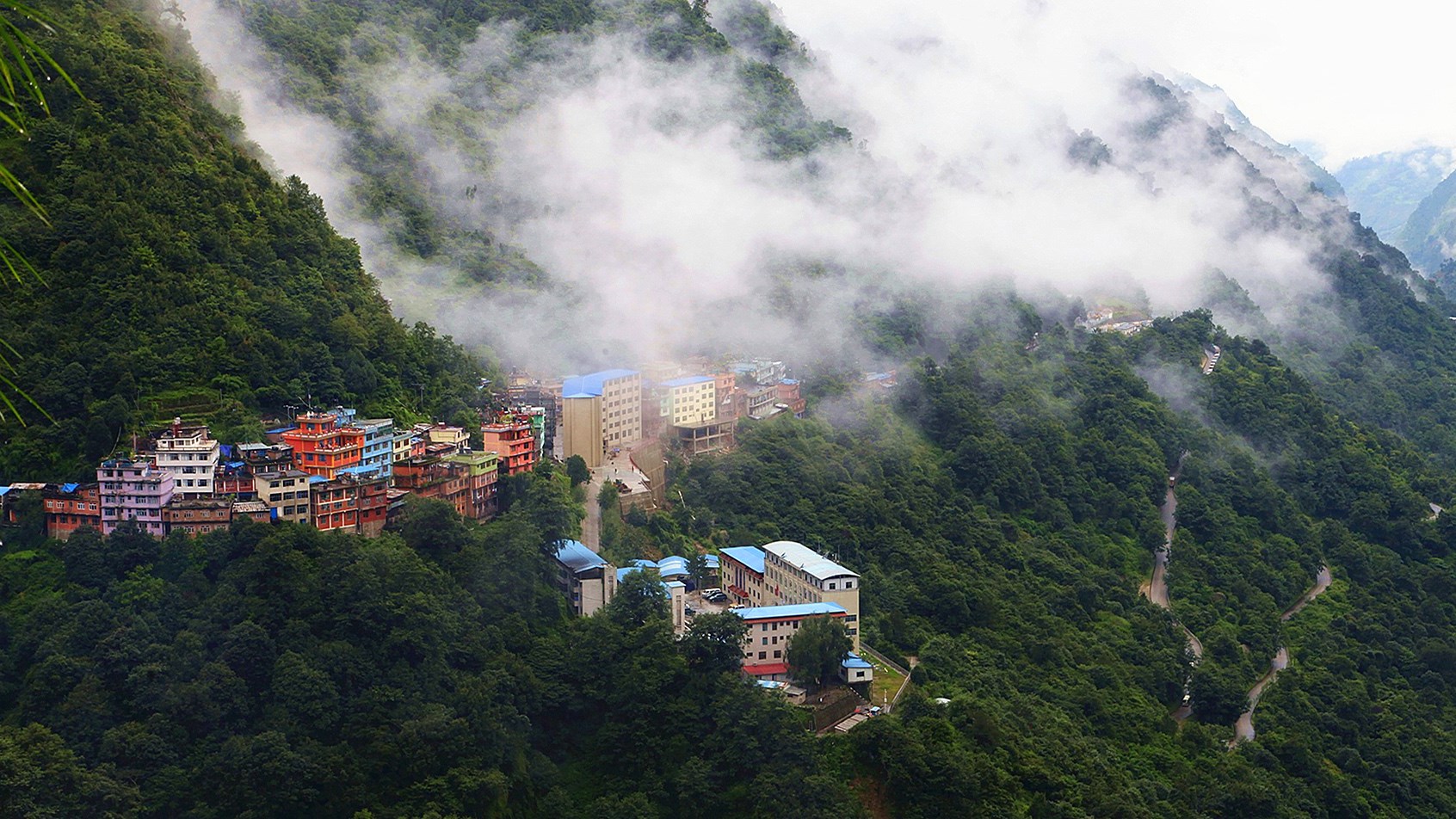
- Border Town Dynamics: Zhangmu itself is a bustling border town that thrives on the trade between Tibet and Nepal. The town is often filled with traders, travelers, and goods moving across the borders, providing a lively and dynamic atmosphere.
- Subtropical Climate: Unlike the harsh, cold climate of much of Tibet, Zhangmu enjoys a subtropical climate that allows for a lush, green environment. This climate supports a variety of flora and fauna, adding to the region’s ecological diversity.
- Friendship Bridge: This bridge over the Bhote Koshi River is the main artery for transportation between Tibet and Nepal. It's a symbolic structure that represents the connection between the two cultures and economies.
- Trade Market: The local market in Zhangmu is a vibrant place where goods from both Tibet and Nepal are exchanged. It offers a unique shopping experience with a variety of products ranging from Tibetan handicrafts to Nepalese spices.
- Gateway to Everest: For many travelers heading to Mount Everest from the north, Zhangmu serves as a key transit point, making it part of many adventurers' journeys towards the world’s highest peak.
- Cultural Mix: The interaction between Tibetan and Nepalese cultures in Zhangmu creates a unique cultural blend that is evident in the local food, language, customs, and daily activities.
- Scenic Routes: The roads leading in and out of Zhangmu traverse some spectacular scenery, including deep gorges, towering mountains, and verdant forests, making every journey a scenic delight.
- Accessibility: Zhangmu’s relatively easy accessibility compared to other parts of Tibet makes it an excellent introduction to the region for travelers coming from Nepal, offering a smoother acclimatization to the high altitudes further north.
Zhangmu Valley serves as a fascinating example of how geography and commerce intertwine, creating a lively and culturally rich environment. Its strategic importance and unique climate make it an essential stop for those interested in the intersection of Tibetan and Nepalese cultures, trade, and natural beauty. Whether you are passing through on your way to greater adventures in the Himalayas or stopping to soak in the vibrant market and lush landscapes, Zhangmu offers a distinctive and enriching experience.
Gyirong Valley
Gyirong Valley is one of Tibet's hidden gems, celebrated for its breathtaking natural beauty and strategic significance as a gateway between Tibet and Nepal. Located in the Gyirong County, this valley boasts a unique blend of stunning landscapes and historical richness, offering a tranquil escape from the more frequented tourist paths. Its relatively lower altitude and milder climate compared to the rest of Tibet make it an ideal destination for both seasoned travelers and those new to high-altitude adventures.
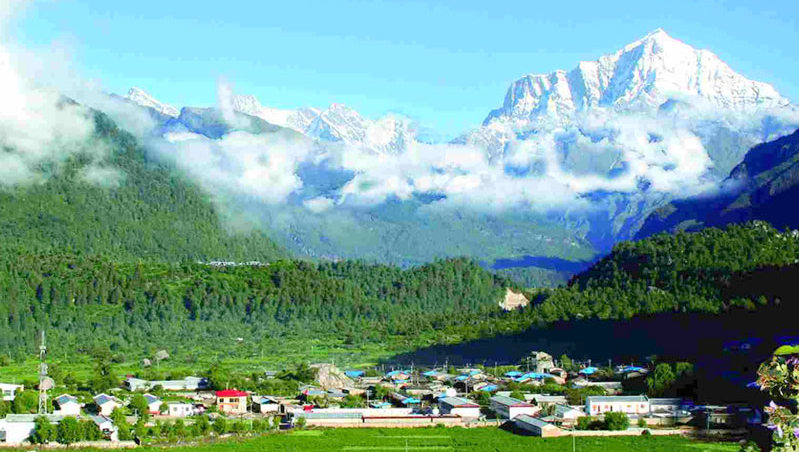
- Natural Beauty: Gyirong Valley is renowned for its lush vegetation and rich biodiversity. The valley is surrounded by high mountains and dense forests, creating picturesque vistas that are a photographer’s paradise.
- Historical Gateway: Historically, Gyirong Valley has been an important trade route between Tibet and Nepal. The recent opening of the Gyirong Port has reinstated its role as a critical junction for cultural and economic exchange.
- Cultural Heritage: The valley is dotted with ancient monasteries and temples, including the Gyirong Monastery, which offers insights into the spiritual practices and architectural styles unique to this region.
- Milder Climate: Unlike the harsh conditions of the Tibetan plateau, Gyirong Valley enjoys a relatively mild climate, which supports a diverse range of flora and fauna, adding to its allure as a place of exceptional natural beauty.
- Ease of Access: With the construction of new roads and the opening of the border crossing at Gyirong Port, the valley has become more accessible to international travelers, making it a convenient entry point for those coming from or going to Nepal.
- Trekking and Hiking: The valley's varied terrain offers numerous trekking and hiking opportunities, ranging from gentle walks through verdant landscapes to more challenging treks up rugged mountain paths.
- Peering into Nepal: From parts of the valley, visitors can get glimpses of the Nepalese landscape across the border, offering a tangible sense of the proximity and interconnectedness of the two regions.
- Rural Lifestyle: Gyirong Valley is an excellent place to observe rural Tibetan life. The local villages with their traditional homes, agricultural practices, and daily routines provide a deeper understanding of the region's culture.
Gyirong Valley not only captivates with its scenic beauty and cultural richness but also serves as a fascinating confluence of Tibetan and Nepalese influences. It's a place where history, nature, and culture intertwine, offering a comprehensive and enriching experience for anyone looking to delve deeper into the heart of the Himalayas. Whether you're trekking through its landscapes, exploring ancient sites, or simply enjoying the peace of rural life, Gyirong Valley promises an unforgettable journey.
Yadong Valley
Yadong Valley, nestled close to the border with Bhutan and Sikkim, is a unique and enchanting region in southern Tibet. Known for its strategic location and historical significance as a trading post, Yadong Valley offers more than just commercial value; it's a place of picturesque landscapes, mild climate, and rich cultural heritage. This valley, with its distinct geographical features and accessible climate, stands as a tranquil escape and a vibrant cultural corridor between Tibet and its neighboring regions.
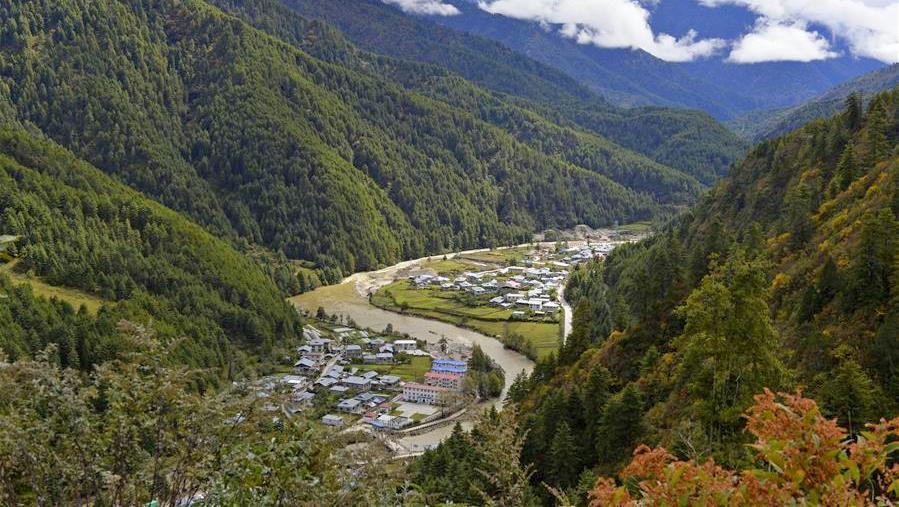
- Strategic Location: Positioned at a crucial juncture near the borders of Bhutan and Sikkim, Yadong has historically served as an important trade and military route, offering a fascinating blend of cultures and histories.
- Mild Climate: Unlike the harsher climates found in much of Tibet, Yadong enjoys a relatively mild climate that supports a diverse range of flora and fauna, providing lush greenery and a more temperate environment for visitors.
- Dzong Fortresses: The valley is dotted with impressive Dzong fortresses that are not only architectural marvels but also hold great historical and military significance. These fortresses provide insight into the region's past strategic importance.
- Vibrant Trade Market: The local markets in Yadong are bustling with activity, offering a variety of goods from both Tibet and neighboring regions. These markets are a testament to the valley's ongoing role as a commercial hub.
- Cultural Interactions: Due to its proximity to Bhutan and Sikkim, Yadong Valley showcases a unique cultural tapestry, reflecting influences from Tibetan, Bhutanese, and Sikkimese traditions and practices.
- Scenic Beauty: The valley's beautiful landscapes, featuring rivers, hills, and forests, make it a picturesque destination ideal for photography, hiking, and simply enjoying the serene natural surroundings.
- Historical Sites: Yadong is home to several historical sites, including ancient monasteries and shrines that offer a glimpse into the spiritual and cultural life of the region.
- Accessibility: With improved roads and infrastructure, Yadong Valley is relatively accessible to travelers, making it a less strenuous yet equally rewarding destination for those exploring southern Tibet.
Yadong Valley is a compelling blend of natural beauty, historical depth, and cultural richness. It serves as a gentle introduction to the Tibetan landscape for those coming from milder climates. Whether you're interested in the historical trade routes, the architectural beauty of ancient fortresses, or the tranquil allure of its natural settings, Yadong Valley offers a diverse and enriching experience that captures the essence of Tibet's borderlands.
Chentang Valley
Chentang Valley, situated near Tsetang in Tibet's Lhoka region, is steeped in historical significance and natural beauty. Known as the cradle of early Tibetan civilization, it is one of the richest agricultural areas in Tibet and boasts several important cultural landmarks. The valley holds a special place in Tibetan history, being closely associated with ancient Tibetan kings and the early spread of Buddhism in the region.
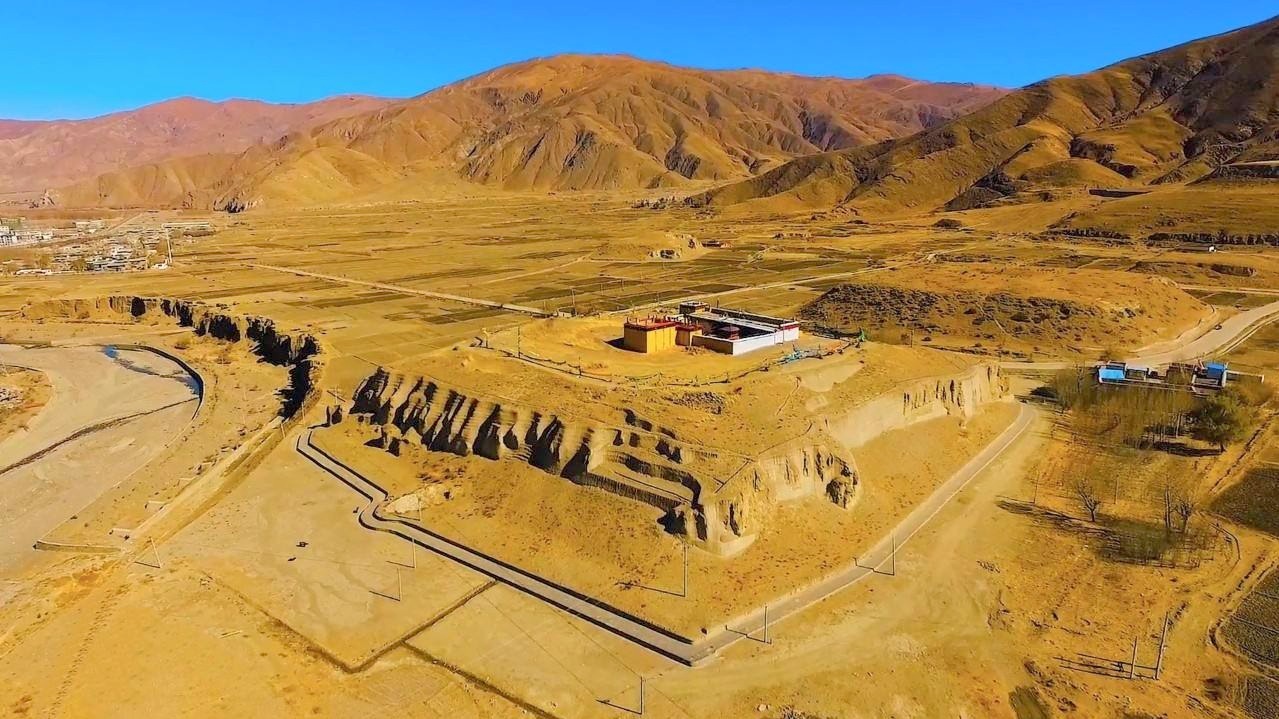
- Yumbulagang Palace: Considered Tibet's first palace, Yumbulagang is perched dramatically on a hill and offers panoramic views of the valley. It is a key historical site, said to have been built for the first Tibetan king, Nyatri Tsenpo.
- Trandruk Monastery: One of the earliest Buddhist monasteries in Tibet, Trandruk holds a significant place in Tibetan history with its stunning thangkas and relics. It's particularly famous for its Pearl Thangka, which is intricately decorated with thousands of pearls.
- Tombs of Tibetan Kings: The valley is home to the ancient burial mounds of Tibetan kings, located in Chongye. These tombs, including the well-known tomb of King Songtsen Gampo, are sacred sites that attract pilgrims and historians alike.
- Agricultural Richness: Chentang Valley is renowned for its fertile lands, making it an important agricultural hub. The fields of barley, wheat, and various fruits underline the valley's role in sustaining local communities.
- Vibrant Local Culture: The valley is a living museum of Tibetan rural life, where traditional customs and practices are preserved. Visiting local villages in Chentang provides insight into the daily lives of Tibetan farmers and their age-old traditions.
- Scenic Landscapes: The natural scenery of Chentang Valley is breathtaking, with lush fields set against the backdrop of rugged mountains. It's an excellent location for hiking and enjoying the peaceful rural atmosphere.
- Spiritual Significance: Chentang Valley has a deep spiritual significance due to its historical monasteries and the ancient rituals that are still practiced by the local communities. It offers a profound spiritual experience for those interested in Tibetan Buddhism.
- Accessibility: The valley is relatively accessible from Tsetang, Tibet's third-largest city, making it a convenient destination for those looking to explore historical sites without venturing too far into remote areas.
Chentang Valley offers a unique combination of historical depth, cultural richness, and natural beauty. It provides a window into the early civilization of Tibet and continues to be a place of pilgrimage and exploration for those drawn to its ancient heritage and tranquil landscapes. Whether you're a history enthusiast, a spiritual seeker, or simply a lover of nature, Chentang Valley promises a memorable and enriching experience.
Best time to visit the most famous Valleys in Tibet
Visiting the most famous valleys in Tibet can be a profoundly different experience depending on the season. Each season offers unique advantages and considerations:
- Spring (March to May): Spring is a vibrant time to visit the valleys in Tibet as the weather begins to warm up, and the landscape bursts into life with blooming flowers and greenery. It's an excellent time for photography and enjoying the natural beauty without the extreme cold typical of winter. Key valleys like the Yarlung Tsangpo and Nyang-chu Valley show their lush side during this season, making it ideal for those interested in scenic landscapes and moderate temperatures.
- Summer (June to August): Summer is the peak tourist season in Tibet, offering warm temperatures and the most accessible travel conditions, especially in high-altitude areas like Gama Valley. This is the best time for trekking and exploring the outdoor attractions, as the days are longer and mostly clear. However, be aware that it can also be the rainy season, which might lead to occasional travel disruptions, especially in more remote valleys like Gyirong Valley.
- Autumn (September to November): Autumn is considered by many as the best time to visit Tibet's valleys due to the clear skies, stable weather, and spectacular autumn colors. It's an excellent season for trekking and outdoor activities, as the temperature is comfortable. Sightseeing in culturally rich valleys like Lhasa Valley and Yadong Valley during this period is particularly rewarding with the added beauty of autumnal hues.
- Winter (December to February): Winter in Tibet can be quite cold, but it also offers a unique experience with fewer tourists and stunning snowy landscapes. Some valleys, particularly those at lower altitudes like Zhangmu Valley, might still be accessible and offer serene, snow-covered scenes. However, travel to higher altitude areas can be challenging due to snow and ice, so it's essential to be well-prepared and check local travel advisories.
Each season in Tibet offers distinct experiences, and the best time to visit depends largely on your interests and which valleys you plan to explore. For those interested in cultural festivals or specific activities like trekking, aligning your visit with the appropriate season will enhance your experience significantly.
Essential tips for the most famous Valleys in Tibet
When planning a journey through the most famous valleys in Tibet, there are several essential tips to consider to ensure a smooth and enriching experience:
- Acclimatize Properly: Tibet's high altitude can pose health risks due to lower oxygen levels. Spend a few days in Lhasa or a similarly elevated location to acclimatize to the altitude before venturing into higher or more remote valleys like Gama Valley.
- Secure Travel Permits: Tibet is a region with restricted access for foreigners. Ensure you have all necessary permits arranged in advance through a travel agency. This includes the Tibet Travel Permit, and depending on your itinerary, additional permits for certain areas.
- Choose the Right Season: Each valley in Tibet has an optimal visitation time. For instance, spring and autumn offer clearer skies and moderate temperatures ideal for exploring valleys such as the Yarlung Tsangpo and Gyirong Valley.
- Respect Local Customs: Tibetan culture is deeply rooted in Buddhism. Show respect in monasteries and temples: dress modestly, remove your hat, and avoid loud conversations. Always walk clockwise around religious sites and spinning prayer wheels.
- Pack Appropriately: Weather in Tibet can be unpredictable. Layered clothing allows you to adjust to changing conditions, and sun protection is crucial due to the intense UV rays at high altitudes. Essential items include a good quality sunblock, lip balm, and sunglasses.
- Hire Local Guides: Local guides not only provide insights into the cultural significance of each valley but can also enhance your safety by navigating difficult terrains and advising on local weather conditions. They are invaluable in remote valleys like Gama Valley and Nyang-chu Valley.
- Prepare for Remote Conditions: Some of the valleys, particularly the less touristy ones like Zhangmu Valley, might have basic accommodations and amenities. Prepare for limited access to modern conveniences and carry necessary supplies, including a first-aid kit, snacks, and water purification tablets.
- Be Prepared for Physical Activity: Trekking is a common activity in these valleys. Ensure you are in good physical condition, and your itinerary allows time for rest and acclimatization to prevent altitude sickness.
- Travel Insurance: Obtain travel insurance that covers high-altitude trekking and medical evacuation. This is crucial for areas with limited medical facilities.
- Stay Connected: While connectivity may be limited in remote areas, it’s wise to have a means of communication in case of emergencies. Consider renting a satellite phone if you plan to venture into isolated valleys.
By following these tips, you can ensure a memorable and safe experience exploring the famous valleys of Tibet, fully immersing yourself in the stunning natural landscapes and rich cultural heritage of this unique region.
FAQs for the most famous Valleys in Tibet
Q: What are the most famous valleys in Tibet?
A: The most famous valleys include the Lhasa Valley, Yarlung Tsangpo Valley, Nyang-chu Valley, Gama Valley, Zhangmu Valley, Gyirong Valley, and Yadong Valley.
Q: What is the best time to visit the valleys in Tibet?
A: The best times to visit are spring (March to May) and autumn (September to November) for moderate weather and clear skies, making these seasons ideal for trekking and sightseeing.
Q: Do I need any special permits to visit these valleys?
A: Yes, visitors need a Tibet Travel Permit to enter Tibet and additional permits for certain areas. It's best to arrange these through a travel agency well in advance.
Q: What should I pack for a trip to the Tibetan valleys?
A: Pack layered clothing for variable weather, sun protection, comfortable trekking shoes, a first-aid kit, snacks, water purification tablets, and your travel documents including permits.
Q: Are there any cultural practices I should be aware of when visiting Tibetan valleys?
A: Yes, respect local customs by dressing modestly, removing hats in monasteries, walking clockwise around religious sites, and avoiding public displays of affection.
Q: How can I acclimatize to high altitudes in Tibetan valleys?
A: Spend a few days at a moderately high altitude, like Lhasa, to acclimatize before traveling to higher valleys. Stay hydrated, eat carbs, and avoid strenuous exercise initially.
Q: What kind of accommodation can I expect in the valleys?
A: Accommodations range from basic guesthouses and monastic stays to more comfortable hotels in larger towns like Lhasa. Facilities may be more basic in remote areas.
Q: Can I trek independently in these valleys?
A: While independent trekking is possible, it's advisable to have a guide due to the remote nature of these areas and the complexity of navigation and local regulations.
Q: What are some must-see sights in these valleys?
A: Key sights include the Potala Palace in Lhasa Valley, the Samye Monastery in Yarlung Tsangpo, and the unique ecological and cultural landscapes of the Gama Valley.
Q: Is it safe to travel in the Tibetan valleys?
A: Generally, it's safe to travel in these valleys, but it's important to stay informed about local conditions, travel advisories, and health precautions, especially concerning altitude sickness.



